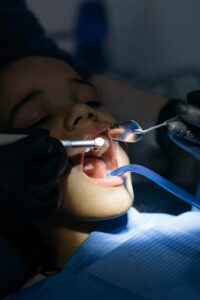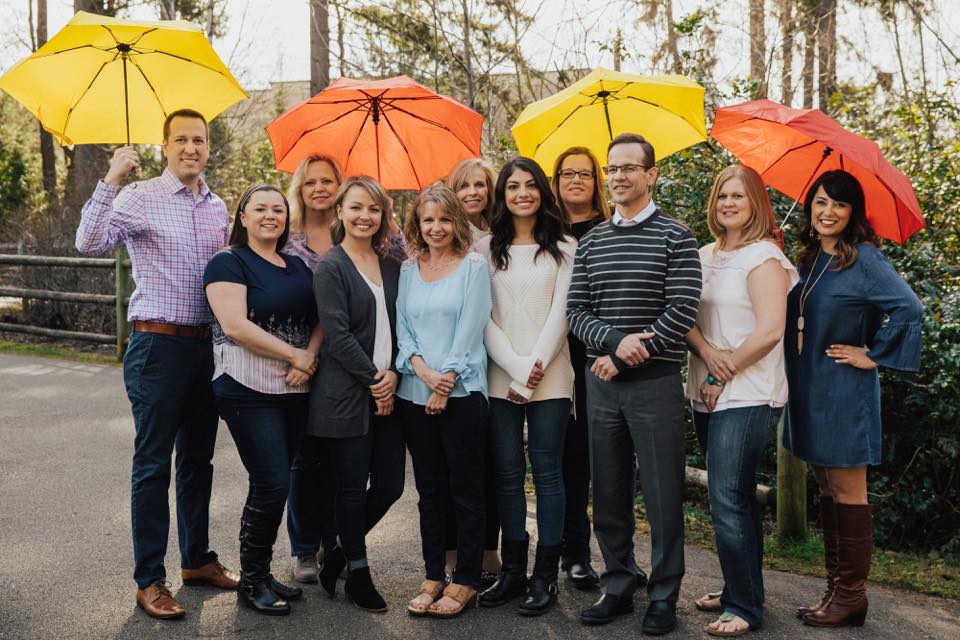If you’re a parent with a child who may need braces, you’ve probably heard some conflicting opinions and myths about braces and the treatment. From outdated beliefs to misinformation on social media, it can be overwhelming trying to separate fact from fiction.
It’s important to separate fact from fiction to make informed decisions regarding your child’s dental care. This post aims to debunk 5 myths about braces, providing clarity and peace of mind for concerned parents.
With that being said, let’s take a look.
Myth 1: Braces Are Only for Aesthetics
When it comes to braces, many people mistakenly believe they are solely for aesthetic purposes, focusing only on creating straight, photogenic smiles. While cosmetic improvements are certainly a significant benefit, braces contribute significantly to a child’s overall oral health.
Orthodontic treatment corrects many dental issues, including:
- Misaligned teeth.
- Jaw problems.
- Chewing problems.
- Improper bites.
Which all of these can lead to more severe dental issues if left untreated.
Furthermore, braces can help with jaw development. For children, aligning the teeth properly during growth phases can prevent more severe issues later in life.
A well-aligned bite ensures that the jaw develops correctly, potentially saving on more extensive treatments as the child grows. This holistic approach to oral health emphasizes that braces are much more than a cosmetic fix; they are a crucial tool for maintaining long-term dental wellness.
In essence, braces serve multiple purposes beyond aesthetics. They work to improve function, enhance oral hygiene, and ensure proper jaw development, proving their value as a comprehensive dental solution.
Myth 2: Braces Are Only for Teens
Another common myth is that braces are exclusively for teenagers. Many parents assume that orthodontic treatment should wait until the teenage years when all permanent teeth have erupted.
However, early intervention can be highly beneficial. The American Association of Orthodontists recommends that children have an initial evaluation by age seven. This early assessment can identify potential issues that might be easier to correct while the child is still growing.
Early orthodontic treatment, often referred to as Phase 1 treatment, can guide jaw growth and emerging teeth, address bite problems, and help create space for crowded teeth. By intervening early, orthodontists can minimize the risk of more complex treatments later. Correcting developmental issues at an early stage also reduces the likelihood of teeth needing extraction in the future.
Additionally, early treatment can have psychosocial benefits for children. Correcting problems early on can boost a child’s self-esteem and social interactions during formative years. Parents should consider early orthodontic evaluations to ensure that their child’s oral development stays on track, preventing bigger challenges in the future.
Myth 3: Braces Are Painful and Uncomfortable
Many parents recall their own experiences with braces and assume that the discomfort they felt decades ago still holds true.
Fortunately, advances in orthodontic technology have significantly improved the comfort of braces. Modern braces are more efficient and less obtrusive, with innovations such as heat-activated wires that adjust more gradually and gently than traditional ones.
Today’s braces use lighter materials, reducing the pressure on teeth and minimizing discomfort. Self-ligating braces, like the Damon Braces system, eliminate the need for elastic ties, reducing friction and allowing for smoother tooth movement.
These technological advancements mean that children experience less soreness during adjustments and overall treatment.
Orthodontists now prioritize patient comfort, using innovative tools and techniques to make the experience as pleasant as possible. Pain management strategies, such as using orthodontic wax or over-the-counter pain relief, further ease any discomfort.
Parents can feel more at ease knowing that their children’s braces experience will be far more comfortable than they might remember.
Myth 4: Braces Are Expensive
One of the most common myths about braces is that they are prohibitively expensive. While it’s true that orthodontic treatment can be a significant investment, parents should consider the long-term benefits and potential cost savings.
As mentioned earlier, early intervention with braces can prevent more severe issues in the future, potentially saving on costly dental treatments down the road. A well-aligned bite also improves oral hygiene, reducing the risk of gum disease and tooth decay, which can lead to costly dental procedures.
Many orthodontists offer payment plans and flexible financing options to help make braces affordable for families. Additionally, some insurance plans cover a portion of the cost for orthodontic treatment.
Myth 5: Braces Can Be Avoided with Good Oral Hygiene
While excellent oral hygiene is crucial for maintaining dental health, it cannot correct structural issues that require orthodontic intervention.
Braces address problems such as:
- Crooked teeth.
- Misaligned bites.
- Jaw discrepancies.
These issues can’t be fixed by just brushing and flossing alone.
Good oral hygiene practices complement orthodontic treatment, ensuring that teeth and gums remain healthy during the process.
Braces are necessary for correcting developmental dental issues that could lead to more severe problems if left untreated. These issues are often genetic or developmental rather than results of poor hygiene. Orthodontic treatment works in tandem with good oral hygiene to provide comprehensive oral care.
Educating Children on Proper Oral Hygiene
Educating children about maintaining proper oral hygiene during orthodontic treatment is essential. Brushing and flossing carefully around braces prevents plaque buildup and tooth decay, ensuring that when the braces come off, the underlying teeth are healthy and strong.
Parents should encourage their children to maintain excellent oral hygiene practices throughout their orthodontic treatment.
Conclusion
Orthodontic treatment is a valuable investment in a child’s long-term dental health. Parents should not let common myths about braces deter them from seeking early orthodontic evaluations or considering braces for their children.
Braces are no longer solely cosmetic, but rather an essential tool for optimal oral health. They can be comfortable and affordable, with the added benefit of improving self-esteem during formative years.
By educating themselves on the facts and consulting with an experienced orthodontist, parents can make informed decisions regarding their children’s dental care. Braces may be a temporary inconvenience, but the long-term benefits for a child’s health and confidence make them well worth it.
For parents ready to explore orthodontic options, here at My Smile Orthodontist, we offer expert consultations and personalized treatment plans. Our team is dedicated to making each patient’s experience comfortable and effective.
Schedule a free consultation today to learn how we can help create a beautiful, healthy smile for your child.












